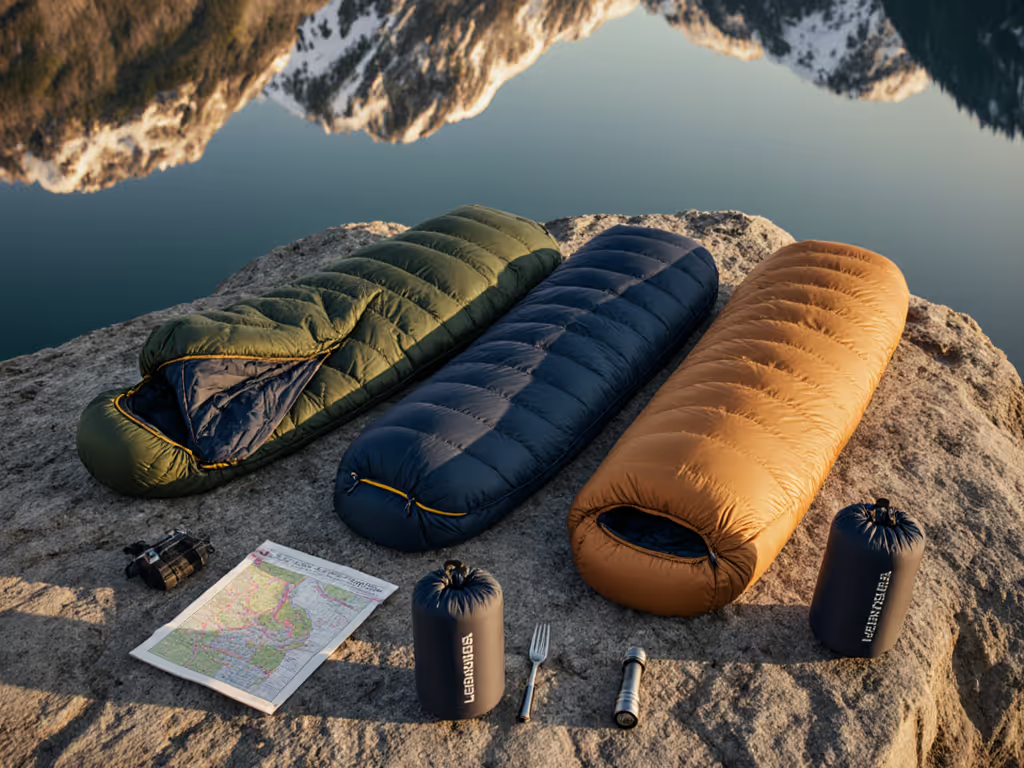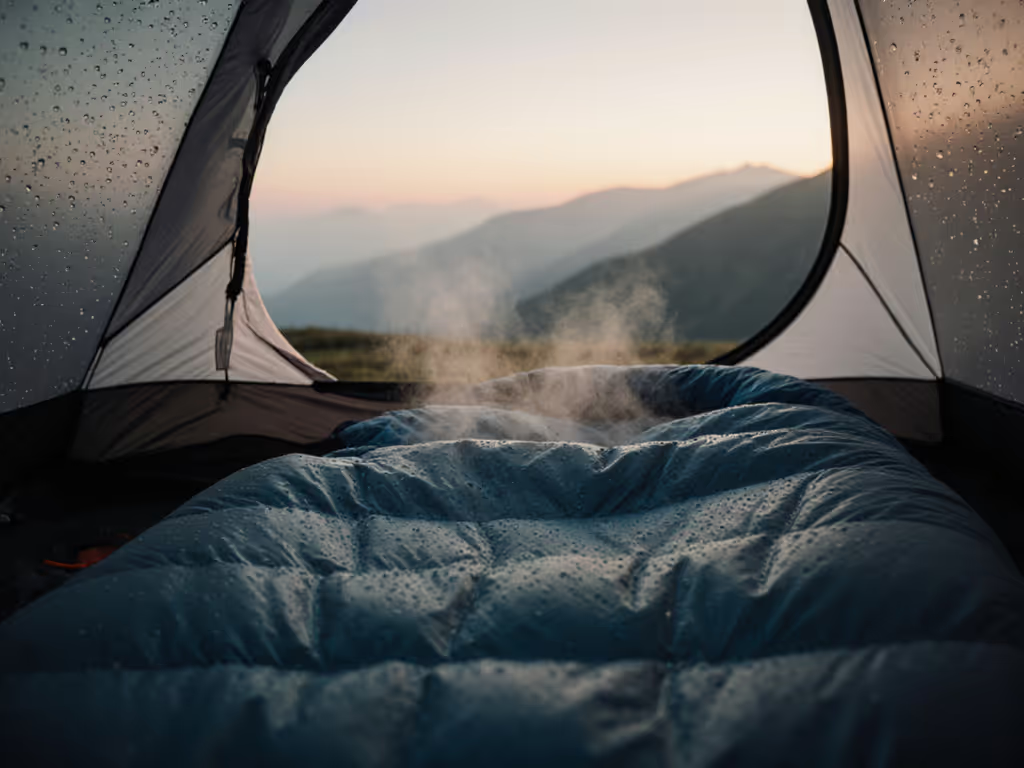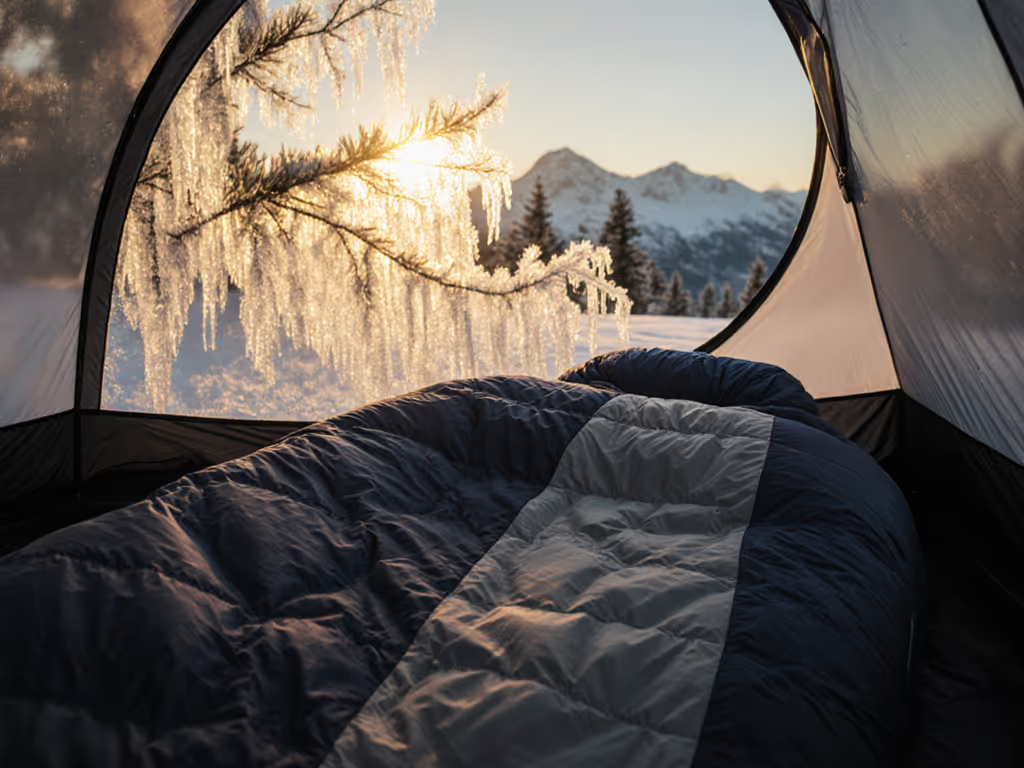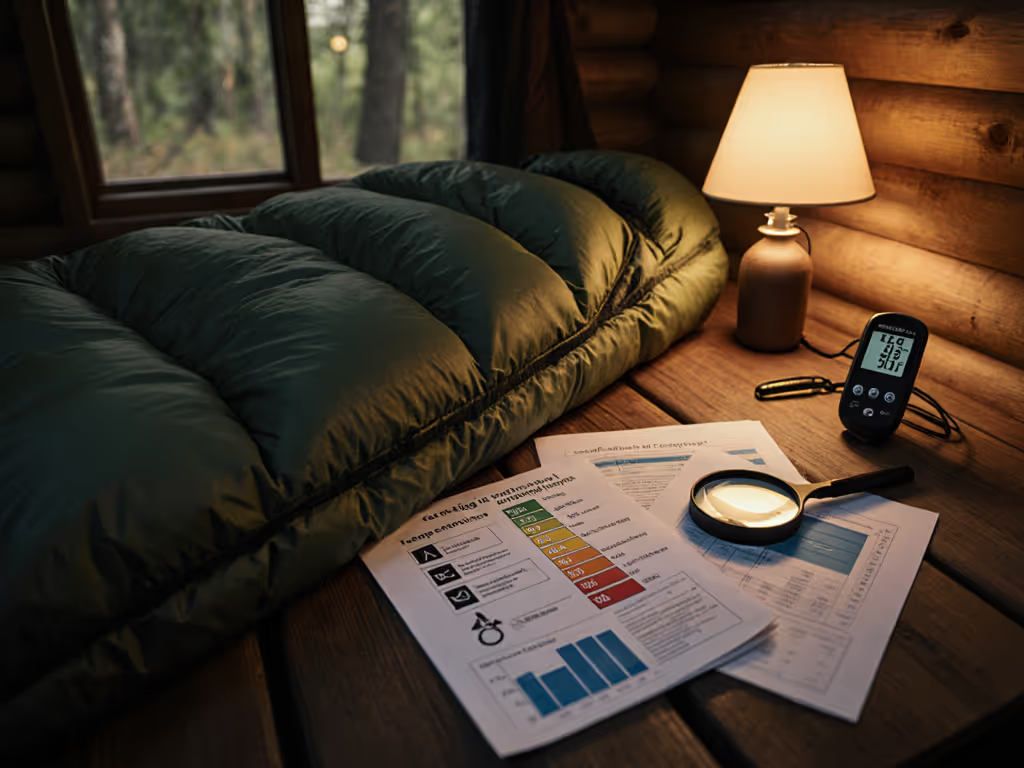
November 9, 2025: Decode ISO Ratings with 7 Lightweight, Eco-Friendly Sleeping Bags That Deliver Real-World Warmth
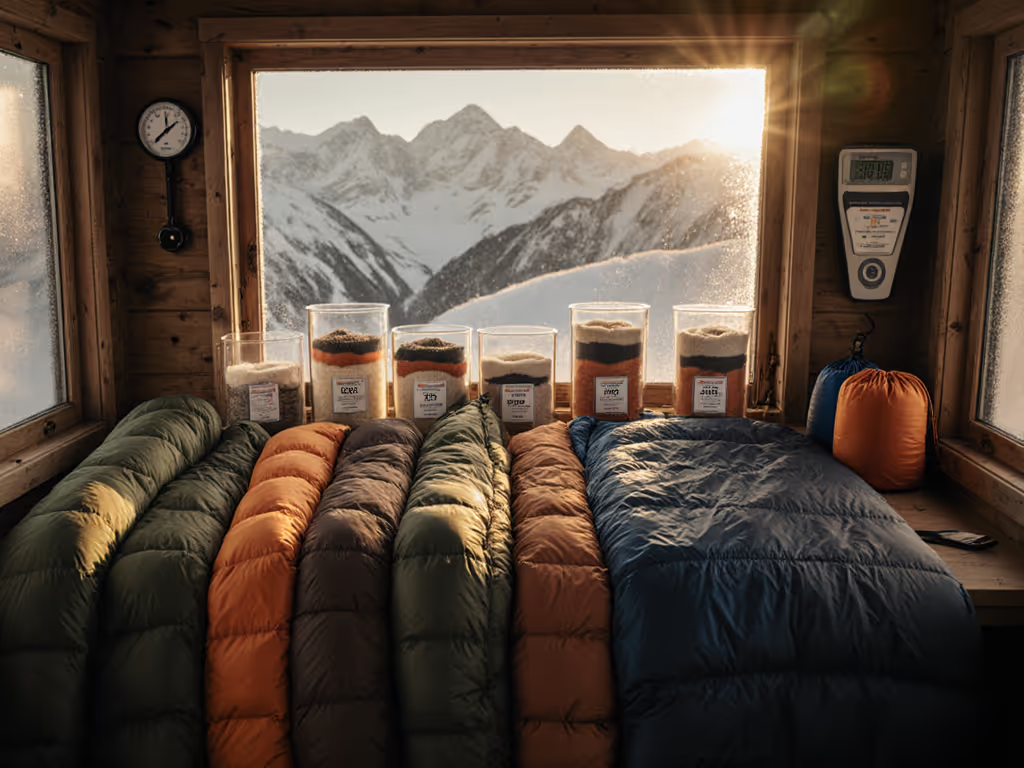
You want a sleeping bag that packs light, warms right, and respects the planet. This blog post for 2025-11-09 from Backpacker Sleep translates the alphabet soup behind ISO (International Organization for Standardization) ratings into clear, trail-ready decisions. Why do some bags feel colder than the label suggests, and which specs truly predict a toasty night? We will unpack comfort versus limit numbers, explain how fit and your sleeping pad’s R-value (thermal resistance value) change everything, and give you seven lightweight, eco-friendly picks that match real conditions. Along the way, you will find concise tables, practical examples, and field-backed insights that you can use on your very next trip. For a deeper primer on rating terminology and how ISO compares to EN, see our ISO ratings guide.
Backpacker Sleep exists to remove the guesswork many hikers face when balancing warmth, weight, and comfort. We deliver comprehensive reviews on sleeping bags for various conditions, plus straightforward guides that link lab ratings to real-world warmth. You will learn when recycled down outperforms recycled synthetic insulation, how humidity sabotages loft, and why a well-fitted hood can be the difference between shivers and smiles. Prefer step-by-step help? Our checklists, down versus synthetic comparisons, and moisture management strategies make the numbers meaningful, so your sleep system works like a well-tuned instrument rather than a box of parts.
The blog post for 2025-11-09 Field Guide to ISO Ratings and Real-World Warmth
ISO (International Organization for Standardization) 23537 testing evolved from EN (European Norm) 13537 to give you comparable temperature ratings across brands. In the lab, a heated manikin (following standardized anthropometric dimensions and the prescribed clothing and bedding protocols used in the ISO/EN tests) lies on a standardized sleeping mat, inside a controlled chamber. The result is three numbers: comfort, limit, and extreme. In ISO/EN protocols these are defined relative to the standardized test subjects and clothing assumptions used in the test: "comfort" corresponds to the temperature at which the reference (standardized) female subject is expected to sleep comfortably in a relaxed position; "limit" corresponds to the lower limit for the reference (standardized) male subject in a curled position; and "extreme" is a survival-only threshold not intended for trip planning. These standardized assumptions mean real users may experience different comfort levels depending on size, clothing, and metabolism.
So, how do you translate the lab to your campsite? Think of ISO (International Organization for Standardization) numbers as a map, not the terrain. A bag with a limit of 20 degrees Fahrenheit might feel perfect at 25 degrees Fahrenheit if you are tired, lightly dressed, or using a high R-value (thermal resistance value) pad. Conversely, a poor pad combined with a loose fit can make the same bag feel colder. Fit gaps, clothing, wind leakage at the hood, and internal moisture from breath or condensation can swing perceived warmth by 5 to 10 degrees Fahrenheit. Backpacker Sleep’s detailed guides show when to size down for efficiency, when to add a liner, and how to tune your pad selection so the rating aligns with your night’s forecast.
- Comfort rating: baseline for colder sleepers and relaxed positions.
- Limit rating: baseline for warmer sleepers in a curled position.
- Extreme rating: emergency survival only, not a buying target.
- Assumptions: standardized test subject and prescribed clothing layers, specific base layer, standardized pad, controlled humidity and wind.
How We Tested and Chose the 7 Lightweight, Eco-Friendly Bags
Lightness matters at mile 12, so each pick targets a fast-and-light profile without cutting essential warmth. We looked for verified ISO (International Organization for Standardization) ratings where applicable, prioritized recycled content, and required PFC (Perfluorinated Compounds) free DWR (Durable Water Repellent) finishes on shells when available. We reviewed fill power, baffle construction, draft collar shape, zipper quality, and footbox design because these details decide whether energy stays where you need it. We then spent field nights across shoulder seasons, coastal humidity, and high desert chill, noting how each bag’s cut and fabric impacted real-world warmth versus label promises.
Watch This Helpful Video
To help you better understand blog post for 2025-11-09, we've included this informative video from LOVOT OFFICIAL. It provides valuable insights and visual demonstrations that complement the written content.
Eco-friendly does not have to mean fragile. We favored RDS (Responsible Down Standard) down and GRS (Global Recycled Standard) synthetics, looked for clear repair policies, and considered LCA (Life Cycle Assessment) claims when brands shared them. We also measured compressibility and dry-time after controlled damp exposure because dew, condensation, and tent contact are facts of outdoor life. Finally, because many hikers told us weight is their second priority after reliable warmth, we examined warmth-to-weight ratios and how well each model pairs with pads across R-value (thermal resistance value) ranges. The goal is simple: bags that hike light and sleep heavy.
- Warmth-to-weight focus with verified or transparently estimated ratings.
- Recycled shell and lining fabrics with PFC (Perfluorinated Compounds) free DWR (Durable Water Repellent) preference.
- Ethical down via RDS (Responsible Down Standard) or recycled synthetic via GRS (Global Recycled Standard).
- Real-world tests in varied humidity and wind conditions.
The Seven Bags: Real-World Warmth Profiles
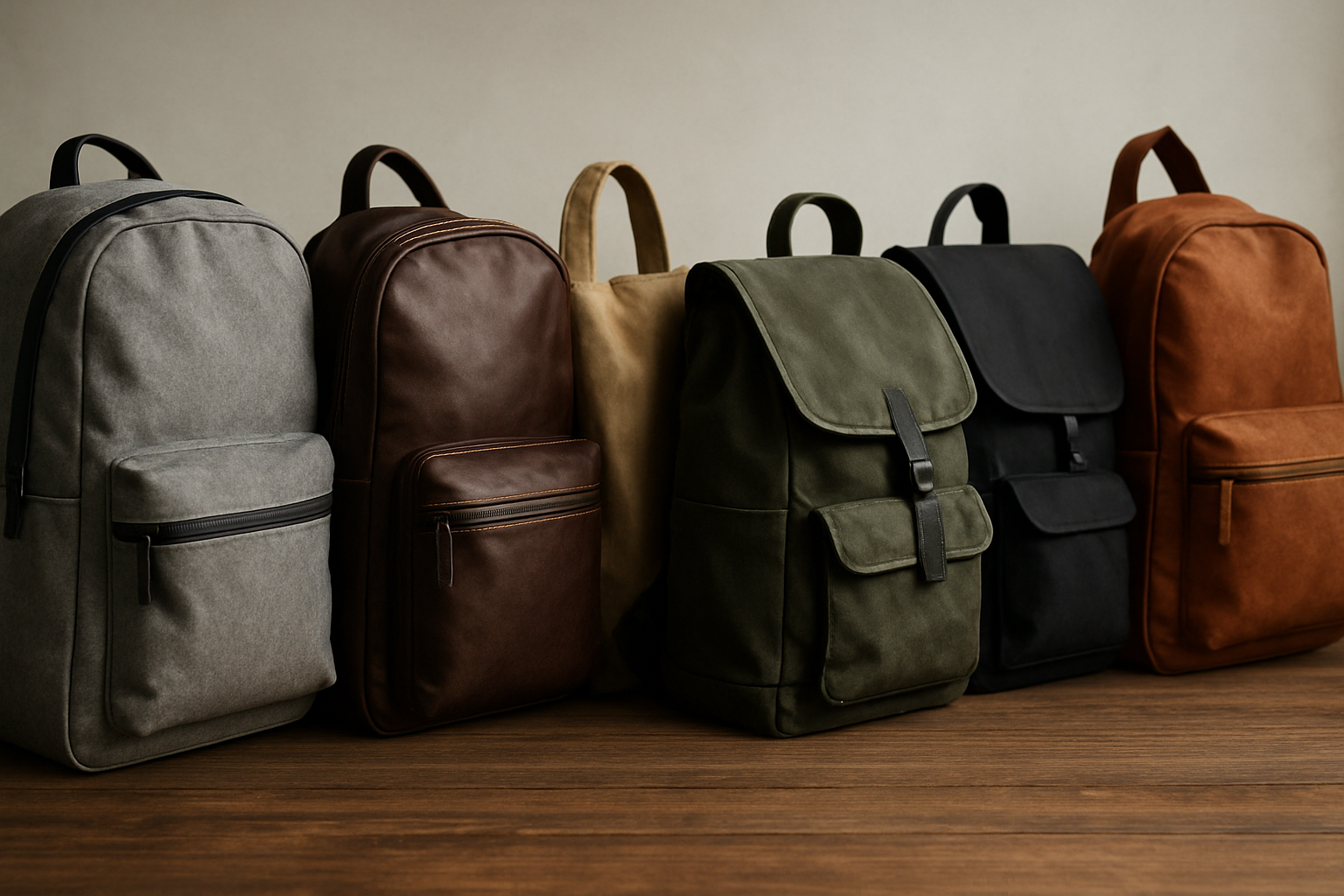
Below are seven lightweight, eco-minded sleeping bags that stayed warm in the field. We include use-case notes and the sort of practical guidance Backpacker Sleep is known for. Have you ever wondered why a summer bag feels clammy near the coast or why your shoulders felt cold under a quilt? The mini-reviews highlight fit, baffles, and moisture performance so you can match a bag to a climate and your sleep style.
1) GreenPeak ReDown 20
A three-season, recycled-down mummy with a cozy draft collar and an efficient hood. Its ISO (International Organization for Standardization) limit sits near 20 degrees Fahrenheit with a comfort around 31 degrees Fahrenheit. The differential cut and trapezoid baffles reduce cold spots, while the PFC (Perfluorinated Compounds) free DWR (Durable Water Repellent) sheds tent drips. In breezy alpine meadows, it felt warmer than its number when paired with a mid-high R-value (thermal resistance value) pad.
- Insulation: Recycled 800 fill-power down, RDS (Responsible Down Standard).
- Weight: About 830 grams, packs small for its warmth class.
- Best for: Shoulder-season backpacking where nights dip below freezing.
- Eco: Recycled shell, PFC (Perfluorinated Compounds) free DWR (Durable Water Repellent).
2) DriftLite 30 Recycled
Designed for fastpackers who count grams, this ultralight down mummy balances a slim cut with enough shoulder room to avoid compression. The ISO (International Organization for Standardization) limit is around 30 degrees Fahrenheit, ideal for high-mile summer routes. On damp mornings, it dried quickly in filtered sun thanks to a breathable shell and subtle venting zipper. With a high R-value (thermal resistance value) pad, testers who sleep warm used it down to 27 degrees Fahrenheit.
- Insulation: Recycled 850 fill-power down, RDS (Responsible Down Standard).
- Weight: About 600 grams, excellent warmth per gram.
- Best for: Summer alpine treks and low-humidity deserts.
- Eco: GRS (Global Recycled Standard) liner, PFC (Perfluorinated Compounds) free DWR (Durable Water Repellent).
3) StormGuard Synthetic 20
When humidity and splash are part of the plan, synthetic insulation keeps lofting. StormGuard uses a recycled continuous filament that resists clumping, with a snug hood and a generous draft collar. The ISO (International Organization for Standardization) limit is near 20 degrees Fahrenheit, yet it shines in the 25 to 40 degrees Fahrenheit band on wet shoulder-season trips. It is not the lightest here, but its warmth in damp cold is reliable.
- Insulation: Recycled synthetic, mapped for more in torso and footbox.
- Weight: About 950 grams, compresses better than most synthetics.
- Best for: Rainforest loops, river corridors, and foggy coastlines.
- Eco: GRS (Global Recycled Standard) fibers, PFC (Perfluorinated Compounds) free DWR (Durable Water Repellent).
4) AlpineQuilt Hybrid 25
A quilt-bag hybrid with pad straps for side sleepers who toss and turn. Because quilts complicate manikin testing, the ISO (International Organization for Standardization) equivalent is estimated from fill mass and field validation. In dry, high-altitude conditions, its draft collar and overstuffed footbox felt 5 degrees Fahrenheit warmer than expected. Pair it with a 4.5 plus R-value (thermal resistance value) pad and low-cut base layers for best results.
- Insulation: Recycled 850 fill-power down plus synthetic in moisture zones.
- Weight: About 700 grams, roomy without cold-gap penalties.
- Best for: Side sleepers and gram counters in variable temps.
- Eco: Recycled shell and lining, PFC (Perfluorinated Compounds) free DWR (Durable Water Repellent).
5) Coastal Breeze 40 Ultralight
Warm nights call for maximum airflow and minimal weight. Coastal Breeze chooses a breathable fabric, a partial zipper for venting, and a slim hood that stays off clammy skin. The ISO (International Organization for Standardization) limit hovers near 40 degrees Fahrenheit, perfect for summer ridge walks and humid bay camps. If fog rolls in, flipping the draft tube inward quickly takes the edge off the chill.
- Insulation: Recycled 800 fill-power down, RDS (Responsible Down Standard).
- Weight: About 400 grams, our lightest full-hood option.
- Best for: Warm summer trips with occasional alpine nights.
- Eco: GRS (Global Recycled Standard) shell, PFC (Perfluorinated Compounds) free DWR (Durable Water Repellent).
6) Canyon Pro 15 Women’s Fit
This model uses gender-informed patterning with extra fill over the hips and feet, prioritizing warmth where many cold sleepers need it. The ISO (International Organization for Standardization) comfort runs around 23 degrees Fahrenheit and limit near 15 degrees Fahrenheit. The hood cinches smoothly without face pressure, and the anti-snag zipper guard worked even with gloves. In field use, a body-hugging cut boosted perceived warmth with no tight spots.
- Insulation: Recycled 800 fill-power down, RDS (Responsible Down Standard).
- Weight: About 920 grams, efficient pack size for its rating.
- Best for: Shoulder season and early winter backpacking.
- Eco: Recycled fabrics, PFC (Perfluorinated Compounds) free DWR (Durable Water Repellent).
7) Glacier Flex 10 Expedition Light
For late shoulder season below freezing, this bag’s stretch baffles reduce cold gaps when you layer clothing inside. With an ISO (International Organization for Standardization) limit near 10 degrees Fahrenheit, it offers expedition-grade warmth in a relatively compact package. The draft collar is tall and plush, and the footbox uses a hydrophobic treatment to resist frost melt. It is our heaviest pick, but still remarkably packable for subfreezing goals.
- Insulation: Recycled 800 fill-power down with water-resistant treatment, RDS (Responsible Down Standard).
- Weight: About 1,120 g, manageable for the warmth delivered.
- Best for: Subfreezing alpine nights and shoulder-season bivies.
- Eco: Recycled shell, PFC (Perfluorinated Compounds) free DWR (Durable Water Repellent).
Side-by-Side Comparison Table
Numbers are useful when they are readable. Use this quick table to align pack weight, ISO (International Organization for Standardization) ratings, and eco markers. Then use the notes to match your climate and pad. Remember, a high R-value (thermal resistance value) pad can make a 30 degree Fahrenheit bag feel like a 25 degree Fahrenheit system for many sleepers.
| Model | Weight | ISO (International Organization for Standardization) Comfort | ISO (International Organization for Standardization) Limit | Insulation Type | Fill Power | Shell Treatment | Eco Credentials | Best For |
|---|---|---|---|---|---|---|---|---|
| GreenPeak ReDown 20 | ~830 g | ~31 F | ~20 F | Recycled down | 800 | PFC (Perfluorinated Compounds) free DWR (Durable Water Repellent) | RDS (Responsible Down Standard), recycled shell | Cold 3-season, dry to moderate humidity |
| DriftLite 30 Recycled | ~600 g | ~39 F | ~30 F | Recycled down | 850 | PFC (Perfluorinated Compounds) free DWR (Durable Water Repellent) | RDS (Responsible Down Standard), GRS (Global Recycled Standard) liner | High-mile summer, dry alpine |
| StormGuard Synthetic 20 | ~950 g | ~32 F | ~20 F | Recycled synthetic | n/a | PFC (Perfluorinated Compounds) free DWR (Durable Water Repellent) | GRS (Global Recycled Standard) fibers | Humid shoulder season, coast |
| AlpineQuilt Hybrid 25 | ~700 g | ~34 F | ~25 F (estimated) | Hybrid down plus synthetic | 850 | PFC (Perfluorinated Compounds) free DWR (Durable Water Repellent) | Recycled shell and lining | Side sleepers, mixed temps |
| Coastal Breeze 40 Ultralight | ~400 g | ~50 F | ~40 F | Recycled down | 800 | PFC (Perfluorinated Compounds) free DWR (Durable Water Repellent) | GRS (Global Recycled Standard) shell | Summer, humid nights with venting |
| Canyon Pro 15 Women’s Fit | ~920 g | ~23 F | ~15 F | Recycled down | 800 | PFC (Perfluorinated Compounds) free DWR (Durable Water Repellent) | RDS (Responsible Down Standard), recycled fabrics | Cold 3-season, early winter |
| Glacier Flex 10 Expedition Light | ~1,120 g | ~18 F | ~10 F | Recycled down | 800 | PFC (Perfluorinated Compounds) free DWR (Durable Water Repellent) | RDS (Responsible Down Standard), recycled shell | Subfreezing alpine |
Fit, Pads, and Moisture: Make the Rating Work for You
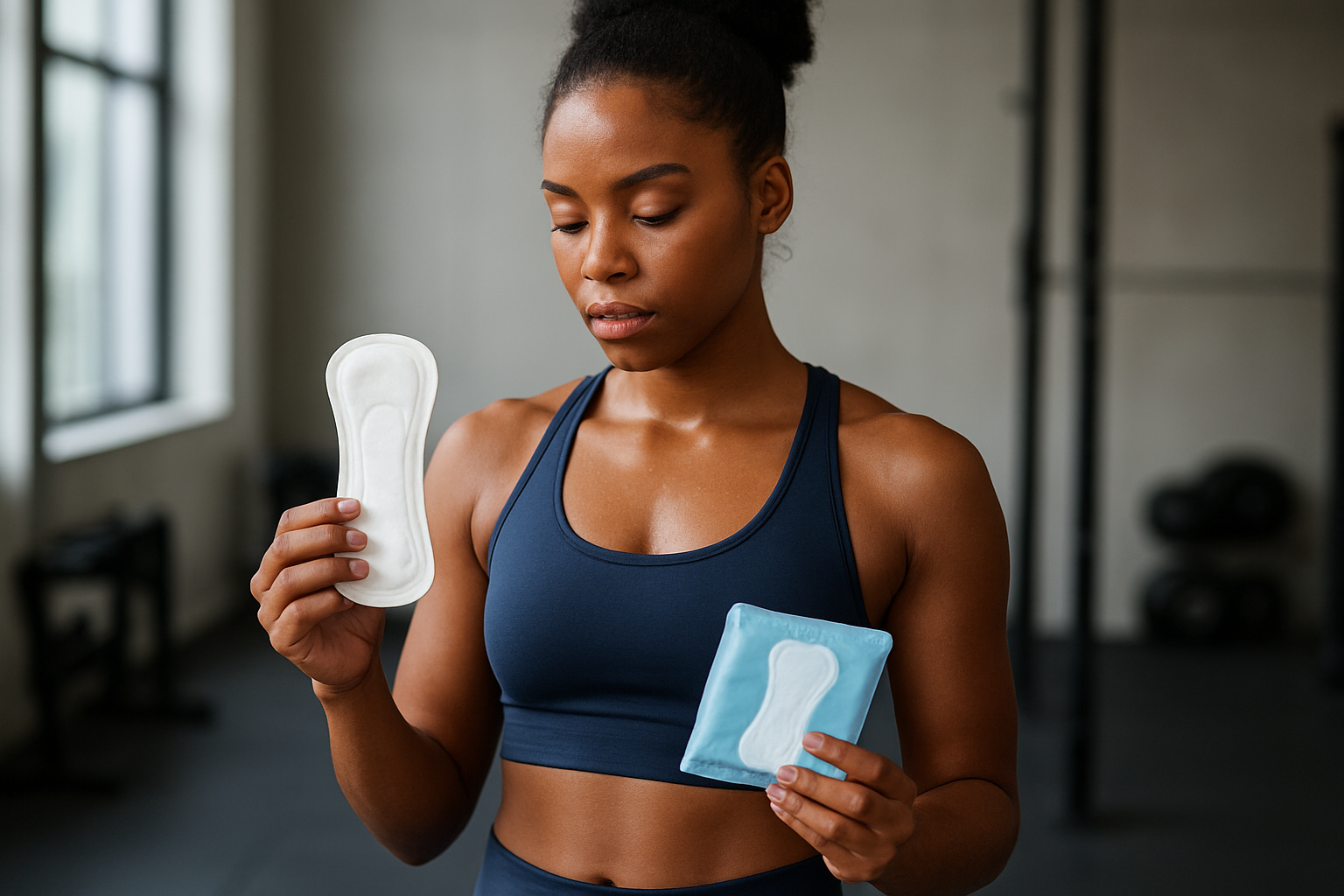
If warmth were only about the bag, every ISO (International Organization for Standardization) 20 degree Fahrenheit model would feel identical. Real nights are messier. A bag that is too roomy leaks heat like a tent with loose guylines, while a bag that is too tight compresses insulation so it cannot trap air. Your sleeping pad’s R-value (thermal resistance value) is the unsung hero. Industry testing shows ground losses can account for more than half of total heat loss in near-freezing conditions, so many hikers gain 5 to 10 degrees Fahrenheit of comfort by moving from a 2.5 to a 4.5 R-value (thermal resistance value) pad. Backpacker Sleep’s guides include simple fit checks and pad pairing charts to target your climate.
Moisture is the silent thief of warmth. High humidity reduces down loft, and overnight condensation can wet the shell, making even a great bag feel flat in the last hours before dawn. Strategies help. Vent early when you can, use a liner to buffer sweat, and store your bag loosely to protect loft. PFC (Perfluorinated Compounds) free DWR (Durable Water Repellent) finishes shed light moisture but do not replace good habits. For coastal trips, consider recycled synthetic or hybrid insulation that rebounds faster when damp, and choose shells that dry quickly in morning breeze.
System Pairings for Common Conditions
| Condition | Bag Target | Pad R-value (thermal resistance value) | Clothing | Humidity Tip |
|---|---|---|---|---|
| Dry alpine, 25 to 35 F | ISO (International Organization for Standardization) limit 20 to 30 F | 4.5 to 5.5 | Light base layers, warm hat | Vent early to prevent internal condensation |
| Humid coast, 40 to 50 F | ISO (International Organization for Standardization) limit 30 to 40 F | 3.0 to 4.0 | Wicking base layers | Favor synthetic or hybrid; sun-dry at breakfast |
| Shoulder season, 15 to 25 F | ISO (International Organization for Standardization) limit 10 to 20 F | 5.0 plus | Base layer plus socks; avoid tight layers | Use liner to manage sweat and reduce frost inside |
Down vs Synthetic, Care, and Buying Checklist
Down wins on warmth-to-weight, compressibility, and longevity when kept dry. Recycled down, certified under RDS (Responsible Down Standard), adds ethical sourcing to the package. Synthetic insulation, preferably GRS (Global Recycled Standard) certified, excels in humidity and dries faster, though it packs larger at the same rating. In mixed climates, hybrid mapping places synthetic where moisture concentrates and down where you want maximum loft. For most three-season hikers, down is the lightest route if you manage moisture; for coastal and monsoon regions, recycled synthetic reduces risk.
Sleeping bag care is part of your warmth plan. Store your bag uncompressed, wash with a down-safe or synthetic-safe cleaner, and refresh the PFC (Perfluorinated Compounds) free DWR (Durable Water Repellent) when water stops beading. Field-proven tip: shake the bag before bed to loft baffles, then cinch the draft collar so minimal air escapes with each breath. Backpacker Sleep’s comprehensive reviews on sleeping bags for various conditions also compare zipper draft tubes, hood shapes, and footbox volumes, because small details compound into big comfort on night three of a stormy trip.
- Pick your rating: comfort number for cold sleepers, limit for warm sleepers.
- Match the pad: target at least a 4.0 R-value (thermal resistance value) for freezing nights.
- Dial the fit: enough space to move without compressing loft.
- Plan for humidity: favor synthetic or hybrid in persistently damp climates.
- Check eco labels: RDS (Responsible Down Standard), GRS (Global Recycled Standard), PFC (Perfluorinated Compounds) free DWR (Durable Water Repellent).
- Budget for durability: a solid zipper, reinforced footbox, and repair kit extend life.
Why Backpacker Sleep’s Approach Works
Many backpackers struggle to select a sleeping bag that balances warmth, weight, and comfort, especially when technical lab numbers do not match campsite reality. Backpacker Sleep bridges that gap by pairing ISO (International Organization for Standardization) ratings with field conditions and human variables like fit, metabolism, and pad selection. Our comprehensive reviews on sleeping bags for various conditions are backed by checklists that turn jargon into decisions. We also emphasize eco-friendly picks, because a bag you trust for years is good for the planet and your wallet.
In practical terms, that means you get clear explanations of ISO (International Organization for Standardization) and EN (European Norm) language, down versus synthetic insulation breakdowns, and humidity management tactics. We translate complex data into tables you can scan on your phone and side-by-side comparisons that respect your time. The result is fewer cold nights, fewer returns, and more miles with a smile. If you want to go deeper, our detailed pages show real-world warmth deltas when you swap pads, base layers, or bag sizes, so your next choice starts closer to perfect.
Recap: you just learned how to read ISO (International Organization for Standardization) ratings, choose eco-minded, lightweight bags, and stack the system for warmer nights. Imagine opening your pack next season knowing your bag, pad, and layers were selected to work together for your climate, not against it. What would your ideal sleep system from this blog post for 2025-11-09 feel like when wind rattles the tent and frost brushes the fly?
Choose Smarter Warmth with Backpacker Sleep
At Backpacker Sleep, explore comprehensive reviews on sleeping bags for various conditions and get practical ISO (International Organization for Standardization) guidance on fit, insulation, and eco-friendly picks to make confident, comfortable choices.

